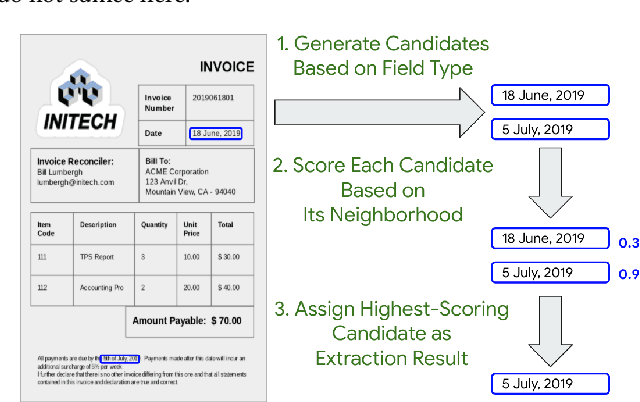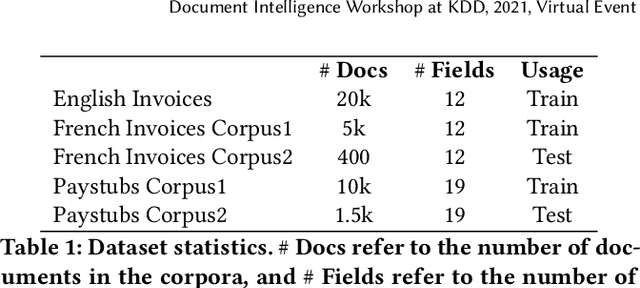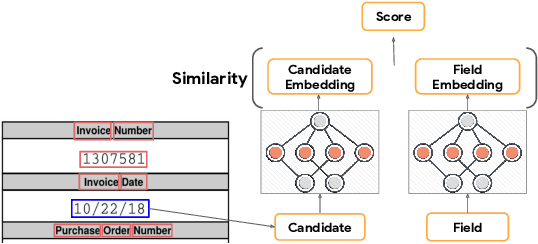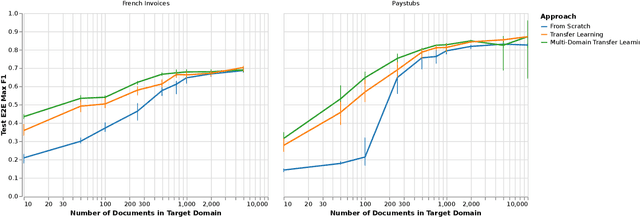Navneet Potti
Radically Lower Data-Labeling Costs for Visually Rich Document Extraction Models
Oct 28, 2022Abstract:A key bottleneck in building automatic extraction models for visually rich documents like invoices is the cost of acquiring the several thousand high-quality labeled documents that are needed to train a model with acceptable accuracy. We propose Selective Labeling to simplify the labeling task to provide "yes/no" labels for candidate extractions predicted by a model trained on partially labeled documents. We combine this with a custom active learning strategy to find the predictions that the model is most uncertain about. We show through experiments on document types drawn from 3 different domains that selective labeling can reduce the cost of acquiring labeled data by $10\times$ with a negligible loss in accuracy.
Data-Efficient Information Extraction from Form-Like Documents
Jan 07, 2022



Abstract:Automating information extraction from form-like documents at scale is a pressing need due to its potential impact on automating business workflows across many industries like financial services, insurance, and healthcare. The key challenge is that form-like documents in these business workflows can be laid out in virtually infinitely many ways; hence, a good solution to this problem should generalize to documents with unseen layouts and languages. A solution to this problem requires a holistic understanding of both the textual segments and the visual cues within a document, which is non-trivial. While the natural language processing and computer vision communities are starting to tackle this problem, there has not been much focus on (1) data-efficiency, and (2) ability to generalize across different document types and languages. In this paper, we show that when we have only a small number of labeled documents for training (~50), a straightforward transfer learning approach from a considerably structurally-different larger labeled corpus yields up to a 27 F1 point improvement over simply training on the small corpus in the target domain. We improve on this with a simple multi-domain transfer learning approach, that is currently in production use, and show that this yields up to a further 8 F1 point improvement. We make the case that data efficiency is critical to enable information extraction systems to scale to handle hundreds of different document-types, and learning good representations is critical to accomplishing this.
 Add to Chrome
Add to Chrome Add to Firefox
Add to Firefox Add to Edge
Add to Edge